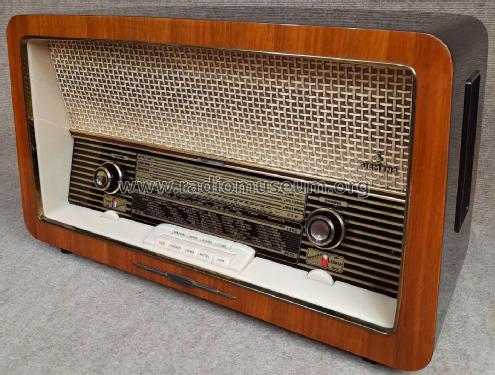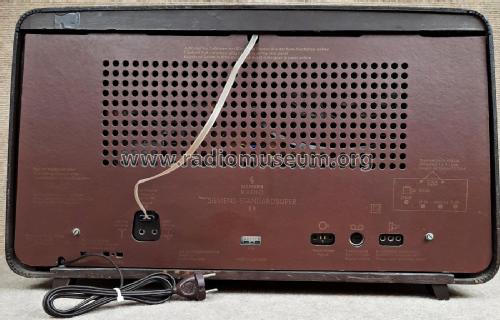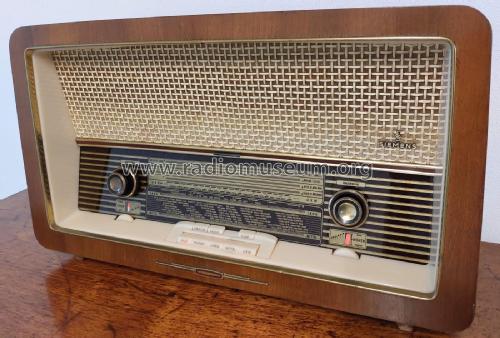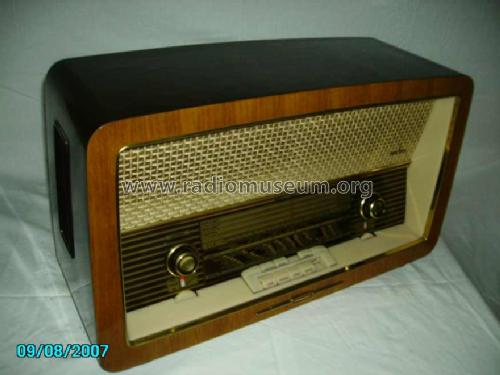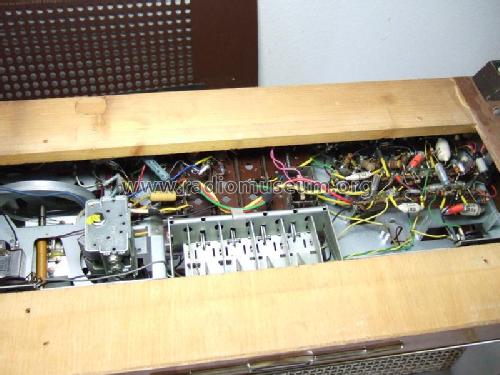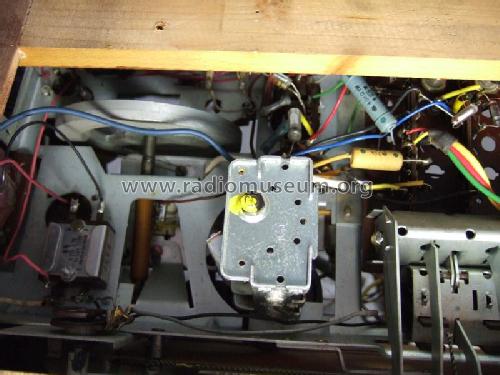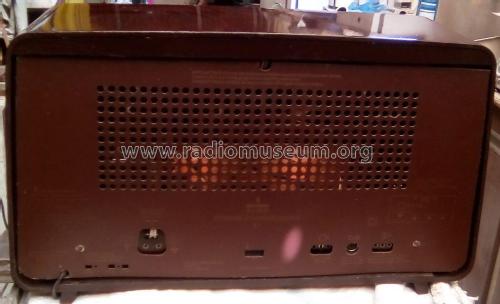- Hersteller / Marke
- Siemens (& Halske, -Schuckert Werke SSW, Electrogeräte); Berlin, München
- Jahr
- 1959/1960
- Kategorie
- Rundfunkempfänger (Radio - oder Tuner nach WW2)
- Radiomuseum.org ID
- 22167
Klicken Sie auf den Schaltplanausschnitt, um diesen kostenlos als Dokument anzufordern.
- Anzahl Röhren
- 6
- Hauptprinzip
- Superhet allgemein; ZF/IF 460/10700 kHz
- Anzahl Kreise
- 6 Kreis(e) AM 10 Kreis(e) FM
- Wellenbereiche
- Langwelle, Mittelwelle und UKW (FM).
- Betriebsart / Volt
- Wechselstromspeisung / 110; 127; 220 Volt
- Lautsprecher
- 3 Lautsprecher
- Belastbarkeit / Leistung
- 5 W (Qualität unbekannt)
- Material
- Gerät mit Holzgehäuse
- von Radiomuseum.org
- Modell: Standardsuper E9 - Siemens & Halske, -Schuckert
- Form
- Tischgerät, Tasten oder Druckknöpfe.
- Abmessungen (BHT)
- 600 x 350 x 210 mm / 23.6 x 13.8 x 8.3 inch
- Bemerkung
- abschaltbare Ferritantenne.
- Nettogewicht
- 8 kg / 17 lb 9.9 oz (17.621 lb)
- Originalpreis
- 289.00 DM
- Datenherkunft extern
- Erb
- Datenherkunft
- HdB d.Rdf-& Ferns-GrH 1959/60
- Weitere Modelle
-
Hier finden Sie 2543 Modelle, davon 2154 mit Bildern und 1347 mit Schaltbildern.
Alle gelisteten Radios usw. von Siemens (& Halske, -Schuckert Werke SSW, Electrogeräte); Berlin, München
Sammlungen
Das Modell Standardsuper befindet sich in den Sammlungen folgender Mitglieder.
Forumsbeiträge zum Modell: Siemens & Halske, -: Standardsuper E9
Threads: 2 | Posts: 34
The FM or UKW band is generating a big noise and the volume goes up and down as I keep dialing...In other words the UKW is not tuning to any stations but very noisy... Any idea how to fix it.. I am new to this world of old tube radio and not sure how to find the bad capacitor that I can change to fix the problem. The long and medium waves are working fine.
David Erali, 26.Aug.18
The FM dipole is only going to pickup "E" field on MW & LW. I have read people suggesting that the FM ant switch is to "improve" AM reception. Well it does.
But not by picking up more signal from the Radio station. The Ferrite Rod is the main aerial for AM bands. The E field is very much higher at Lower frequency when it's a very short aerial in the "Near Field", this means the FM dipole will pick up very local interfence from SMPSU very well but the AM radio station will be poor reception on it.
Thus by rotation of the Ferrite Rod and trying both orientations of the dipole (to reverse phase) the local interference can be greatly reduced with perhaps just a small reduction in the desired signal. The local SMPSU Interference is greatly reduced. Presumably in 1959 the local interference would have been TV line Drive harmonics of 15.625KHz in Germany and any local motors like a fridge compressor.
Michael Watterson, 11.Jan.12



